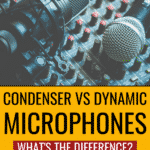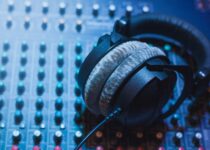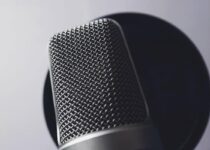The difference between condenser vs dynamic microphones lies in their sensitivity. A condenser microphone has a sensitive diaphragm that picks up low-volume sounds with better detail (an acoustic guitar or studio vocals). In contrast, a dynamic microphone can handle loud sounds with ease (electric guitars and drums).
Picture this – you’re an amateur musician, and you want to record a new song. Of course, you’d like it to sound as close to a studio production as possible, and so using your phone’s sound recorder is out of the question.
The search for studio microphones leaves you confused; just what on earth is a dynamic microphone, and how is it different from a condenser microphone?
The microphone you choose could be the difference between having a crystal clear recording that shows off your skills and a noisy one with too much interference. Read on to find the right one for you!
Post Contents
What’s a Microphone, and Why Does the Type Matter?

Having a separate professional microphone is ideal if you want to get into any field that is audio-heavy. We know you love the voice notes app on your phone, but it probably won’t work when you’re about to record an album, or a two-hour-long podcast that your fans have been waiting for.
A mic is essentially a device to convert sound waves into electrical signals, which can be further read, recorded, and edited by a computer or some other output device. The auditory input for your microphone could be anything from a human whisper (think ASMR artists) to a metal drummer using a double-bass pedal.
How does a dynamic microphone work?
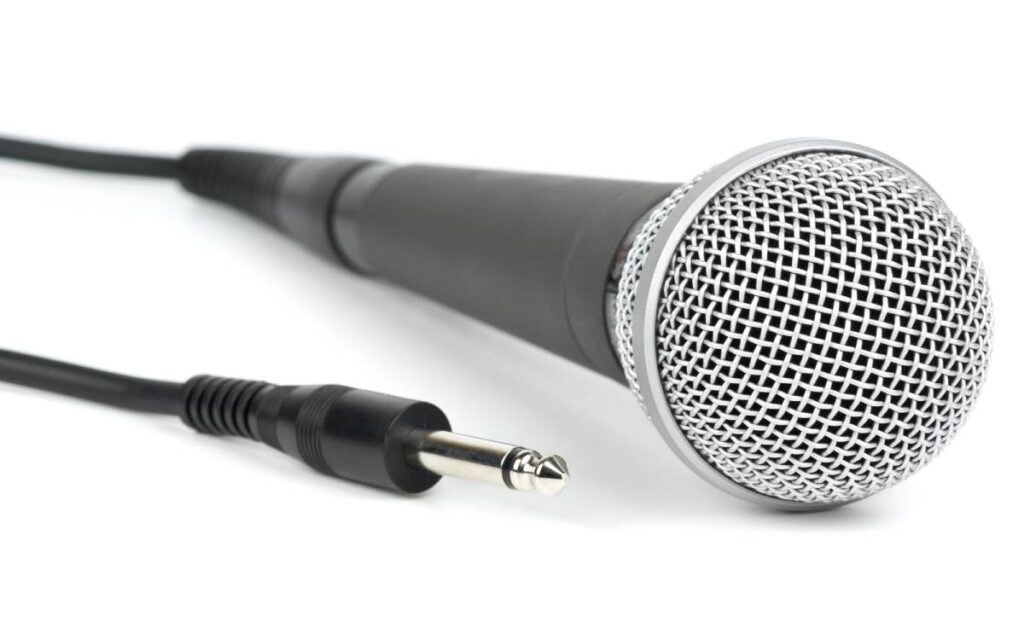
If you’ve ever seen a live event, you’ve seen dynamic mics. These are the oldest types of mics out there and also the most widely used.
In thee types of microphones, sound is created when the soundwaves hit a diaphragm made of polyester film or plastic, causing it to vibrate. A metal coil attached to the diaphragm is what generates the current which is converted to a digital signal. This metal coil is placed between two magnets, and when the diaphragm vibrates, so does the coil.
Imagine a leaf bobbing up and down in rippling water – that’s precisely how the AC current produced by the moving coil looks when visualized on a graph. What this technical jargon ultimately boils down to is that dynamic mics can tolerate higher amplitude.
Higher amplitude toleration means that dynamic mics can withstand louder sounds and pressure changes. This makes them great for recording live gigs or loud instruments (a drum or a baritone sax). Dynamic microphones are also quite durable.
This is why you’ve seen them at most live gigs. They can handle a lot of wear and tear, and the weight of the mic itself acts as a major plus when you’re performing in front of a live audience. We’re thinking punk and screamo vocals and theatre artists.
This durability comes at a cost, however. Because of the weight of the coil, the mic may not pick up a quiet sound or of an exceptionally high or low frequency. The coil simply wouldn’t vibrate enough to create an accurate recording. This means lower tonal accuracy and fewer fine details are picked up.
Then when do you need condenser microphones?

Anytime you need to record really quiet and complex sounds with a higher degree of accuracy, the condenser microphone is your friend.
Just like dynamic mics, condenser mics also have a diaphragm. This diaphragm is made of fragile metal and has a backplate, another thin piece of metal. When electricity is applied to these strips, a static charge is produced between them.
Once a soundwave hits the diaphragm, it vibrates and creates an electrical signal that gets turned into digital input. In short, acoustic energy is converted into electrical energy here.
As you can already tell, the design of condenser mics is significantly more complex vs dynamic mics, which is also why it can pick up on those minor audible anomalies that the dynamic mic cannot register. They also have a flatter frequency response at high frequencies compared to dynamics.
However, this also makes the mic more expensive and fragile. Don’t use a condenser outside a studio space, as they’re very susceptible to wear and tear. No musician wants to break that $500 condenser for a local gig!
If you paid attention, you would’ve noticed us mention that condenser microphones need electricity to work. So, where does this electricity come from?
Phantom Power and Why Condenser Microphones Need Them
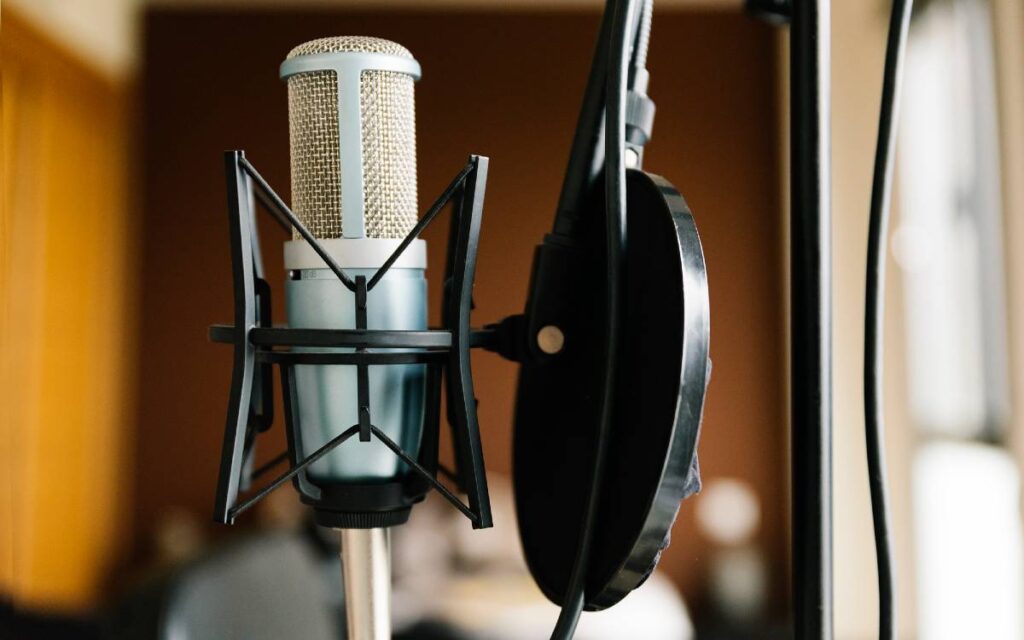
Unlike a dynamic mic, condenser mics need phantom power to do their job. The amount of electricity required could be anywhere from 9 to 48 volts (usually it is 48V). And no, you don’t need to summon a ghost to get it!
This power will usually come from your pre-amp or the audio interface connected to your mic. These will have a phantom power switch on them, which you can turn on, and then you’re ready to go.
This phantom power is necessary for the diaphragm in the condenser mic to move, and thus, it is what makes the condenser mic such a powerful recording tool. This phantom power makes sure that the two thin metal strips inside your mic pick up on every little input you give them.
Omnidirectional and Cardioid Microphones?
So you’ve started to think about which microphone will best suit your needs, and you believe you are coming towards a conclusion. But wait, what’s this? More jargon? Who knew omnidirectional and cardioid microphones even existed?
Decoding what these words mean is really simple. A omni microphones capture sounds from all around it, while cardioid microphones capture sound in a cardioid polar pattern, with a higher sensitivity to sound directly in from of the microphone. This is known as their axis of recording.
If your piece requires you to record echoes or the general atmosphere and acoustics of a room, an omnidirectional mic is what you should consider. You’ll see and hear them being used in church choirs and classical music recordings.
A cardioid mic should come in handy when you need to record only your voice or instrument’s direct sound. For instance, if you’re about to record a podcast, you wouldn’t want the different sounds in your room to interfere with the sound of your voice. Similarly, when you are recording a snare drum, you don’t want to hear the cymbals or hi-hats around it.
And don’t worry, both dynamic and condenser microphones come in either variety, so regardless of which one you thought you would go with, their axis of recording should only help you narrow down your search!
Other Factors Dictating Sound Input For Condenser vs Dynamic Microphones
Sound Pressure Level (SPL)

An important indicator for the durability of your microphone, SPL measures the maximum sound intensity that a microphone can handle without distortion. Those working with high sound pressure levels should choose a dynamic microphone with an SPL level of 120 dB or more.
Podcasters and others dealing with quieter sounds can choose a condenser that measures up to 120 dB. Note that mics with higher SPL levels and a lower noise floor are likely going to be more expensive.
Impedance
While a technical definition of impedance would take us a whole other article, you could define it as a measure of the microphone’s resistance. The impedance of a microphone can be low (50 – 1,000 ohms), medium (5,000 – 15,000 ohms) or high (20,000+).
Impedance indicates how the microphone responds to noise and frequency. A higher resistance, or high impedance, allows hum and reduces higher frequencies. This makes the recording sound noisy and thin.
Impedance is a significant factor regardless of which type of microphone you choose. It also affects the microphone preamp you’ll need. Pick a low, medium, or high impedance microphone as per your needs and preferences. For most home studios, low or medium impedance microphones are generally good enough.
Equivalent Noise Level
You may have heard of this term, which is also called self-noise. The equivalent noise level is the electrical noise that the microphone produces. This might not make much difference to dynamic microphones, but it can affect condensers significantly.
In general, a rule of thumb would be to look out for a microphone that has a self-noise spec of 28dB or lower. This will help you achieve a high-quality recording.
Signal To Noise Ratio
The definition of this term is practically in the name itself. This is essentially the difference between a microphone’s sensitivity and self-noise measured in decibels.
An S/N ratio anywhere above 64 dB should do you good, although you might want to restrict it between 64dB and 80dB if you’re a podcaster or an interviewer.
Condenser Microphone vs Dynamic – Placement

Dynamic mics are remarkably versatile in handling, and thus, they don’t really need to be set a certain way. Of course, you’ll want to look out for the usual suspects in poor audio quality. These include gain-before-feedback and vocal leakage.
If you’re using a dynamic mic in a live performance, you’ll want to keep the mic as close to your instrument as possible. This reduces leakage – however, you’ll also want to make sure that your mic is sufficiently far enough away from the sound source so as not to cause feedback. Keep these two points in mind, and you’re set.
A condenser is quite different. As a tube microphone, the vacuum tube heats up and can damage the mic capsule if you’re holding the mic upright for prolonged amounts of time. This is why you’ll often see condensers suspended upside down in studios.
A significant offender during recordings with condensers is plosives, which are gusts of wind that are naturally produced when pronouncing certain syllables like “p” or “t”. Using a pop filter avoids distortion due to plosives and makes the input much clearer.
In both cases, you need the sound source from a direction that suits the axis of your microphone. So if your microphone is omnidirectional, input from any side would create acceptable results.
However, for cardioid mics, make sure your axis of input is slightly off from the axis of your mic. This reduces the chances of noise due to leakage or gain-before-feedback.
Which Microphone Should YOU Consider?
This goes without saying, but microphone needs are very different depending upon which instrument you play or whether you’re a podcaster. Based on your use case, we’ll try to cover all the bases here and recommend the type of mic, condenser microphone vs dynamic.
Vocalist / Singer-Songwriter
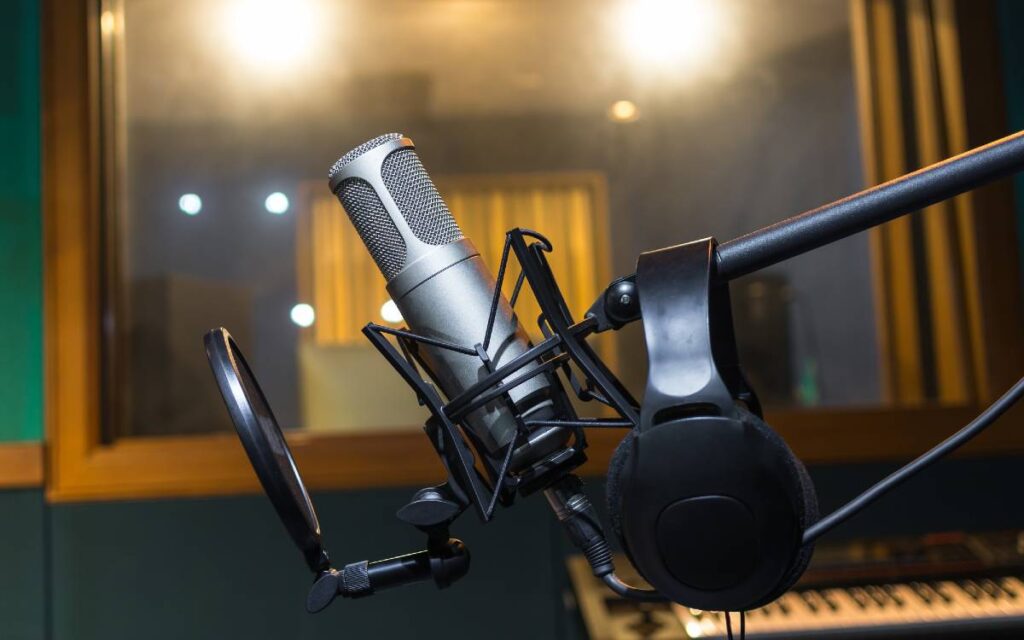
To cut straight to the chase, your best bet for vocal mic in the studio would be a condenser mic. Whether you need a large or small diaphragm in the mic would depend upon your range – if you’re an alto, you might need a larger diaphragm to cover more frequencies. Likewise, a soprano would make do very well with small-diaphragm condenser mics.
That’s not to say that vocalists do not find a use for dynamic microphones. Suppose you’re a singer-songwriter for a band that plays ‘heavier’ genres of music (we’re talking metal, screamo, deathcore, the likes). In that case, you will definitely want a dynamic microphone for its durability over higher volumes.
No matter which genre of musician you are, if you’re singing live, you’ll prefer a dynamic microphone. Omnidirectional microphones are best to capture the acoustics of the venue.
Cardioid microphones are ideal for studio recordings regardless of whether you’re using a dynamic or a condenser. They’ll avoid unwanted noise.
Podcaster
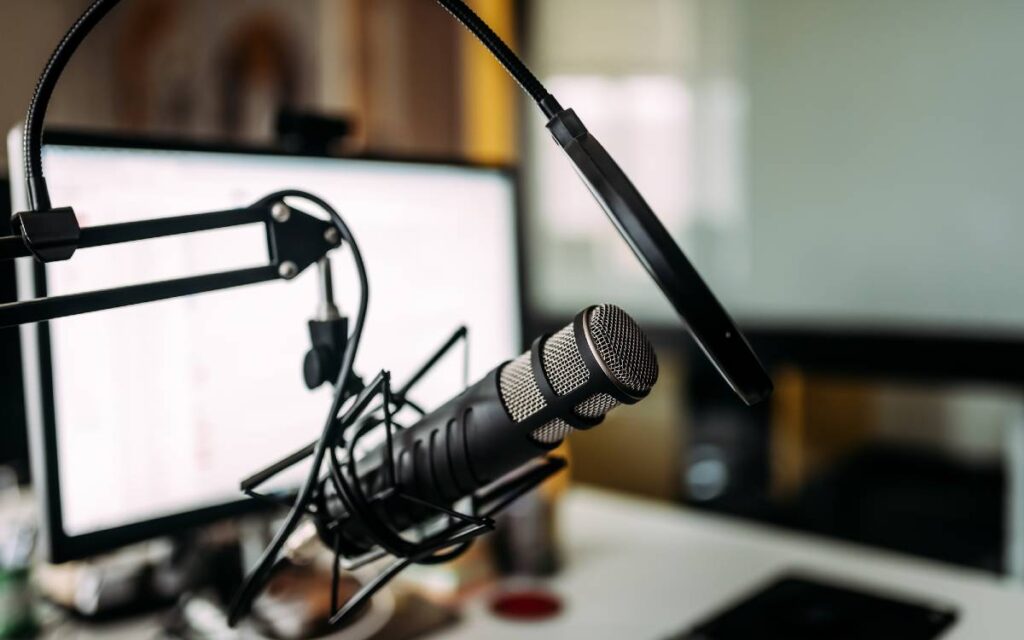
Podcasters all across the board will likely need a cardioid condenser microphone. These are ideal vocal microphones for applications using one microphone for one voice. A condenser will make sure your audience focuses on what matters most- your voice.
Condenser microphones have been the industry standard for voice actors, and they provide the warmth and presence that any good podcast will require. If you’re recording straight into your computer without an interface, you’ll notice that most vocal USB mics tend to be condensers!
Electric Guitars / Electro-Acoustic Guitars
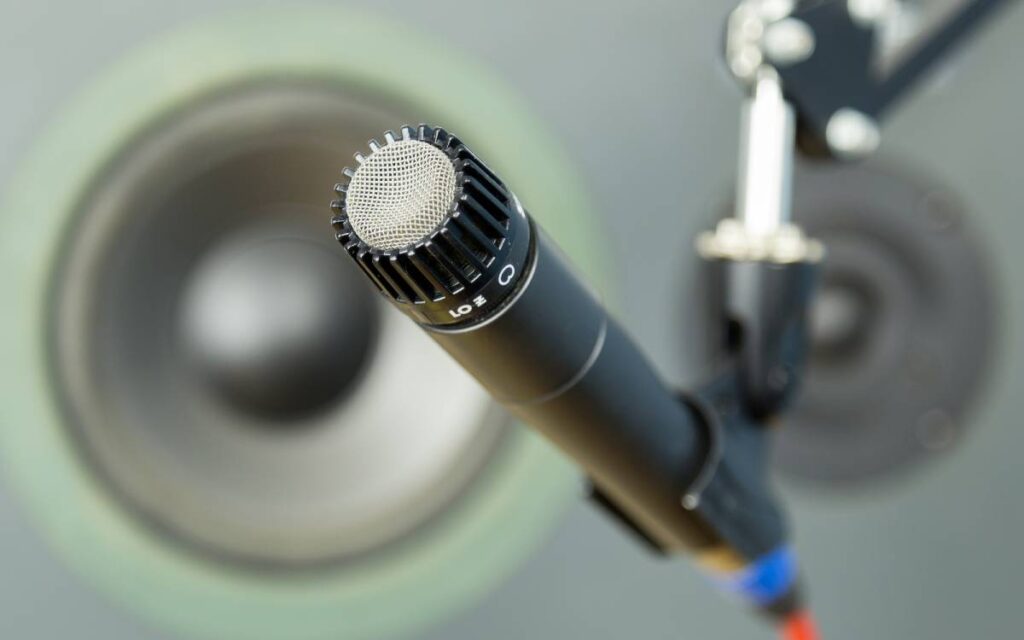
If you’re recording guitar from an amp – either electric or acoustic – we recommend dynamic microphones simply because of how loud the input can be. You also might not need the crispness that a quieter audio input from a condenser would require.
Dynamics work perfectly fine with amp-powered guitars and make the sound robust and powerful. A bonus is that dynamics are often cheaper than condensers. You could easily do a recording with studio-quality without the studio cost.
The Shure SM57 is one of the most popular choices for electric guitar amplifiers: a legendary dynamic mic that you’ve likely heard on all your favorite recordings.
However, if you’re worried about a dynamic microphone not picking up intricate lead frequencies, a large-diaphragm condenser microphone might be better suited to your needs. Ribbon microphones are also a good, but expensive alternative.
Acoustic Guitar / Piano
As acoustic string-based instruments, the acoustic guitar and the piano require mics that can pick up the quietest and most delicate sounds. This is why we recommend small-diaphragm condenser microphones.
If you’re worried about the mic possibly not picking up lower frequencies, we’re here to dispel your fears.
A small-diaphragm condenser will still pick up lower frequencies; it will simply allow the mid-frequencies to sound richer and warmer. Acoustics and pianos primarily play in the mid-frequencies, and a condenser will work wonderfully with them.
Drum Kits
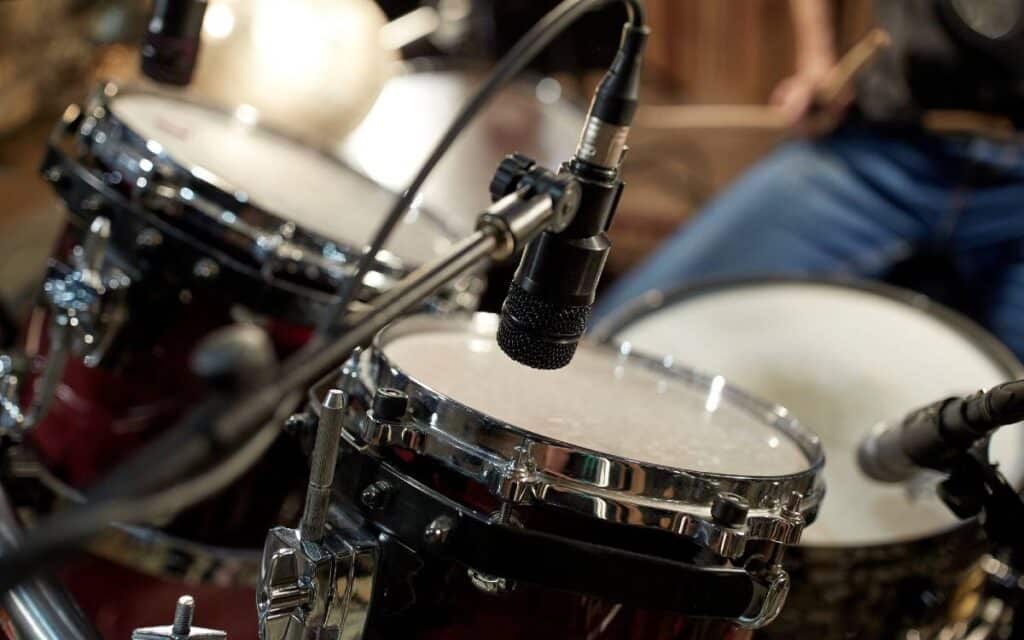
Drums are a tricky instrument to record indoors since they require several microphones. This is a rare case where you will need both dynamic and condenser microphones for the same instrument.
Dynamics are perfect for recording the instrument’s high sound pressure levels, and since they can withstand loud sounds, you can place them next to your desired drum.
We recommend dynamic microphones for your bass drum, snare, and toms since those are the loudest pieces in the drum set.
Recording your cymbals will differ since they produce higher frequencies than your drums and have a crisper sound. We recommend using a condenser for the cymbals so that you can listen to their tone more clearly in the recording.
Dynamic Microphones vs Condensers: Price
Microphones come in a wide range of price points, and the expense will differ based on the specifics you require for your microphone. The brand of the microphone will also likely add to the cost.
Dynamic microphones come in the price range of $10 for an off-brand mic to $899 for the Sennheiser MD 44IU. If you’re looking for a dynamic, we recommend the Shure PGA48 as an affordable low-range dynamic microphone to start you off.
Small-diaphragm condensers range from $27 for cheap ones to $6,200 for the Neumann M 150 Tube, while large-diaphragm condensers come from $11 all the way up to $9,990 for the Sony C-800G Tube. Because of how intricate condensers are, it’s hard to find a professional brand with a condenser microphone under $50.
A low-end cheap professional condenser microphone worth checking out is the Audio-Technica AT2020. At $99, this large-diaphragm condenser provides better sound than the cheaper consumer counterparts and is reliable and crisp.
Frequently Asked Questions About Microphones
Do condenser mics produce a brighter and cleaner sound than dynamics?

No, condenser mics do not always produce a brighter and cleaner sound than dynamics. A condenser is merely tuned to pick up more high frequencies across the spectrum than a dynamic mic. This myth may have originated from the fact that dynamics are associated mainly with gigs.
Whether the sound is clean and bright or not will depend on several factors such as self-noise and pre-amp quality, as well as which audio interfaces you’re using. Whether you’re using a condenser or a dynamic mic doesn’t make much of a difference.
Are dynamics cheaper than condensers?
Yes, a basic dynamic may cost less than a basic condenser. But if you’re looking at the sound quality, dynamics can cost a fortune to ensure the sound you’re looking for.
While condensers generally begin at a higher price point, both dynamic and condenser microphones come in a range of prices.
It might surprise you to know that both condensers and dynamics cost about the same after a certain professional level – we do not recommend you sell an organ to pay for these mics if you’re an amateur.
Do I need expensive dynamic and condenser microphones to sound better?

No, you do not need expensive dynamic or condenser microphones to sound better. There are certain microphones out there, which are consumer-level at best, being sold at professional-level prices. This involves a lot of marketing and technical jargon, and it is in your best interest not to fall for these tricks.
When you’re searching for a new microphone, whether dynamic or condenser, your best bet is to keep an eye out for your specific needs. As long as you find a mic that suits them and fits within your budget, the brand and price cease to matter!

